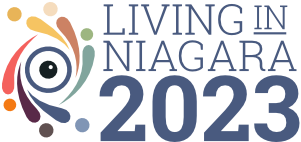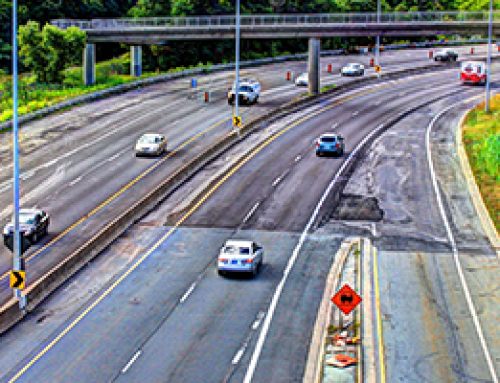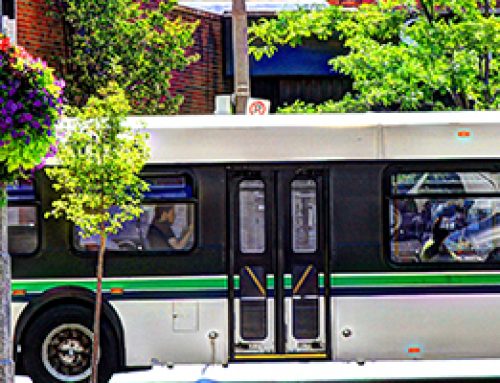Municipalities’ Investment in Transit in Niagara
Understanding how municipalities are prioritizing and spending money on transit is one key to understanding the future growth of public transit throughout the region.
Examining the aggregate budgets of the Regional Municipality of Niagara and the local municipalities in Niagara that offer transit services, we can see that there is an overall trend of increasing investment in transit. Official census data does not include tourists or students using public transit, which would help to explain why rising expenditures in public transit continue, even though the numbers lead to a perception of low usage.
Overall in 2012, Niagara municipalities spent around $22.5 million on transit. In 2013, that amount rose to over $24.6 million. Though this makes up a small amount of overall municipal budgets in Niagara, it is a significant investment into the public transit system in the region.
St. Catharines 2013
Total – 2012 Expenses $8,511,146
Total – 2013 Expenses $9,241,932
Welland 2013: 4% of budget spent on Transit (Port Colborne contracts out to Welland for service)
Total – 2012 Expenses $4,048,780
Total – 2013 Expenses $4,522,961
2013/14 Regional Municipality of Niagara budget
Total – 2012 Projected Expenses $2.7 million, page 28
Total – 2013 Projected Expenses $2.9 million spent, page 58
Total – 2014 projected Expenses $3.29 million, Page 78
Niagara Falls 2013
Total – 2012 Expenses $6,155,457
Total – 2013 Expenses $6,625,040
Fort Erie 2013
Total – 2012 Expenses $746,175
Total – 2013 Expenses $924,748
Niagara on the Lake 2014 (started 2012)
Total – 2013 Expenses $385,000
Total – 2014 Projected Expenses $386,192
Source: Regional Municipality of Niagara, City of St. Catharines, Town of Fort Erie, Town of Niagara-on-the-Lake, City of Niagara Falls, City of Welland
Retrieved From: http://www.stcatharines.ca/en/governin/resources/13DraftTransitBudget.pdf
https://notl.civicweb.net/Documents/DocumentDisplay.aspx?Id=4869
http://www.town.forterie.ca/WebSite/tofeweb.nsf/Doc/OpenDoc.html?OpenFrameset&ID=1FD9694DDC77595985257B9000550AAE&File=2013%20Budget
%20Book%20Final.pdf&Title=2013%20Budget%20Book
http://www.niagarafalls.ca/pdf/finance/budget/2013-approved-budget.pdf
http://www.niagararegion.ca/government/budget/pdf/2014%20Budget%20Summary.pdf
http://www.niagararegion.ca/government/budget/pdf/2013-budget-book-for-web.pdf
http://www.niagararegion.ca/government/budget/pdf/2012/Budget-Summary-2012.pdf
http://www.welland.ca/Finance/pdf/BudgetBook2013.pdf
Niagara Region Planning for Seamless Transit in 2014
In the fall of 2014, Niagara Region Council passed a motion to remove the words “pilot project” out of any reference to inter-municipal transit system, and approved a five-point concept plan with the intent to engage the local municipalities in building a region-wide model for seamless transit.
Guiding Principles include:
Inter‐municipal transit is important to:
- Support GO Service in Niagara
- Facilitate economic development
- Contribute to a high quality of life for Niagara residents
- Provide environmentally sustainable transportation between communities
An effective inter‐municipal transit system will be:
- Customer driven
- Integrated
- Economically responsible
- Fair
Source: Regional Municipality of Niagara
Retrieved From: http://www.niagararegion.ca/council/Council%20Documents/PWC%20intermunicipal%20transit.pdf
Survey of Niagara Residents to Gauge Level of Support for Niagara-wide Transit
In April-May of 2014, Pollara Strategic Insights conducted research including a total of 4,681 telephone, online and in-person surveys of Niagara residents, to gauge their level of support for Niagara-wide transit. At least 75 interviews were completed in each local municipality. Data was weighted and targeted by municipality, gender and age, to be representative of Niagara Region’s adult population.
Respondents to the random telephone survey portion of this research (1,013 responses) expressed strong
support for inter-municipal transit; many residents consider themselves likely to use inter‐municipal transit; and most respondents support maintaining or increasing the amount they pay for inter- municipal transit. Specifically:
- 83% feel inter‐municipal transit is important (63% feel it is very important)
- 61% feel they are likely to use the service (33% feel they are very likely to use the service)
- 48% of residents support increasing the levy to improve the service
- 29% prefer maintaining the current levy
- 18% do not support using property taxes for the service
Source: Regional Municipality of Niagara
Retrieved From: http://www.niagararegion.ca/council/subcommittee/SubCommittee%20Documents/CBPCOTW%20Inter-Municipal%20Transit.pdf
Niagara Municipalities’ Master Transportation Plans
Various official plan and transportation master plan documents from the Regional Municipality of Niagara, as well as local municipalities in Niagara can inform this Sector of the report. They can be found on the various municipalities’ websites.








